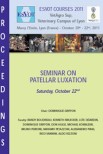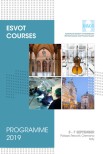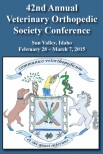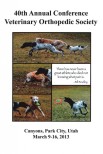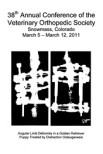Osteoarthritis (OA) in horses is a chronic, degenerative process. Affected horses typically have clinical evidence of synovitis, varying degrees of lameness, and progressive loss of joint function. The inciting cause of OA remains unclear; however, factors such as repeated episodes of trauma, joint instability, synovitis–capsulitis, hypoxia and neovascularization, genetic predisposition, and obesity have been related to its development. The biochemical mediators that are synthesized in affected joints are of an inflammatory nature and include catabolic cytokines and enzymes that degrade cartilage and subchondral bone matrix. Although horses with OA can be recognized clinically and treated symptomatically, it is also important for clinicians to understand the cellular and molecular mechanisms involved in the pathologic process. A thorough understanding of the pathophysiology of the disease can aid clinicians in managing osteoarthritic patients.
Pathophysiology of Osteoarthritis
Date
January/February 2009
Journal
Compendium Equine
Volume
4
Number
1
